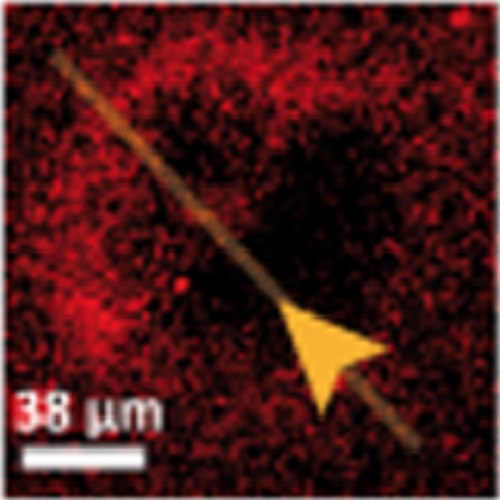Propagation of MinCDE waves on free-standing membranes.
As a spatial modulator of cytokinesis in Escherichia coli, the Min system cooperates with the nucleoid occlusion mechanism to target the divisome assembly towards mid-cell. Based on a reaction-diffusion mechanism powered by ATP (adenosine triphosphate) hydrolysis, the Min proteins propagate in waves on the cell membrane, resulting in oscillations between the cell poles, thus preventing the formation of the division ring everywhere but in the cell centre. The dynamic behaviour of Min proteins has been successfully reconstructed in vitro on supported lipid bilayers (SLBs), reproducing many of the features observed in the cell. However, there has been a marked discrepancy between the speed of propagation of Min protein waves in vitro, compared with the cellular system. A very plausible explanation is the different mobility of proteins on model membranes, compared with the inner membrane of bacteria. To quantitatively demonstrate how membrane diffusion influences Min wave propagation, we compared Min waves on SLBs with free-standing giant unilamellar vesicles (GUV) membranes which display higher fluidity. Intriguingly, the propagation velocity and wavelength on GUVs are three times higher than those reported on supported bilayers, but the wave period is conserved. This suggests that the shorter spatial period of the patterns in vivo might indeed be primarily explained by lower diffusion coefficients of proteins on the bacterial inner membrane.
Back to list
